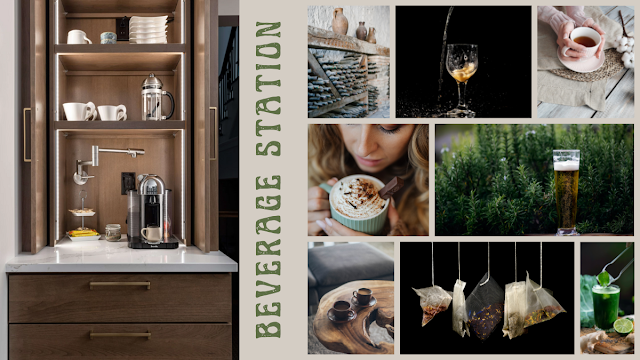How To Choose The Best Cabinets For Your 2023 Remodel
Kitchen And Bathroom Cabinets That Are As Good For The Environment As They Are For You...
There was a time in our architectural history, not too long ago, that homes came with built-in cabinetry as a function. In order to save on building costs, and to some degree, add flexibility, they have gone missing except in the kitchen and bathroom. With sustainability taking a front seat with consumer interest, perhaps it is time to reconsider cabinetry. Not any cabinets will do. Not all cabinets are created equal. This is what you need to know about cabinets before you invest.
First and foremost health is the most important aspect of your cabinetry. How healthy are your cabinets for the environment (think of tree harvesting and replanting practices) and how healthy are they for you? If it isn't solid wood, reclaimed wood, or metal your cabinets could very likely be toxic gassing off VOCs and/or come from environmentally destructive harvesting and production practices. How do you determine which cabinet company is going to give you the healthiest start to your kitchen or bath remodel? Look for these seals:
Good forest stewardship ensures that wood harvesting isn't taking more than the earth can provide. For trees taken trees are planted. Trees intended for your cabinets have been thoughtfully selected instead of "clear cut" leaving blighted areas in the forest.
The highest EPA standards ensure that your personal health as best it can be. The biggest offender in composite woods and glues is formaldehyde. According to OSHA "exposure to low levels in the air or on the skin can cause asthma-like respiratory problems and skin irritation such as dermatitis and itching. Concentrations of 100 ppm are immediately dangerous to life and health (IDLH)." If this isn't a risk you are willing to take with your health or the health of your loved ones, make sure that your cabinets are CARB certified.
PLYWOOD | PARTICLE BOARD | MDF: Plywood is "made from thin sheets of cross-laminated veneer and glued together under heat and pressure." This is where its strength lies. When braced correctly, it's durability far surpases that of particle and MDF board. However, when it comes to a smooth surface for decorative finishes to adhere to, particle and MDF board have plywood beat. Still, most of the desirable quality cabinet characteristics fall under plywood. Plywood resists moisture, is lighter to handle and holds and screws and nails better. For long lasting quality cabinets, look for plywood. If you are more concerned about budget, you will find more options in particle board. Also, particle board edges out plywood in being environmentally friendly due to being made up of recyclable materials.
DOVETAIL | MORTISE & TENON | MITERED: Which is the strongest joinery for your cabinets? It depends but dovetail usually takes the lead. Dovetail is excellent for tensile strength, and elegant. Dovetail is used to join the drawer sides to the front. Mortise & Tenon are perfect and incredibly strong when joining a 90 degree angle. It is the perfect joint for creating heirloom pieces because of its durability. Look for this in your cabinetry. Mitered gets the job done. When two pieces of wood are joined at a 45 degree angle, it is usually mitered. This is perfect for creating a seamless look but not particularly durable when used as joint piece that will endure heavy stress. Be aware of where your cabinets are using this joint.
CORNER GUSSETS | BOARD BRACES | I-BEAMS: The best way to brace your box. Corner gussets are the most economical but not the most durable. These plastic triangles are usually glued, stapled or nailed to support the corners during shipping and installation. While they get the job done, they do not provide the same stability that integrated braces do. Board braces are often integrated with dado, glue and nails and provide much more support than corner gussets but not as much as plywood I-beams. Integrated plywood I-beams create the kind of stability that remains durable for years.
FRAMELESS "EUROPEAN" | FRAMED "AMERICAN" : Frameless cabinetry is going to give you that sleek drawer to drawer and door to door European look. If any form of modern is your cup of tea, this is style is for you. It also provides the most clearance and easy maintenance. However, if you prefer a more traditional look, consider the face frame of American style cabinets. They offer more stable surface for hinges and are characterized by the small to large gaps between drawers and doors. They also allow for recessed or flush door styles.
Some of the advantages are,"In frameless construction, cabinets do not have a face frame attached to the front of the cabinet box. After they have been installed, all you will see are the flat door and drawer fronts, providing a sleek, simple aesthetic that can work with many design themes throughout the home.
Frameless cabinets do not have a center stile coming down in the middle of the two cabinet doors, providing easier access to the items inside, as well as more storage space to work with. The shelves are typically adjustable. Drawers in frameless cabinetry also tend to be larger because of the space saved by not having a face frame attached to the front."


















Comments
Post a Comment